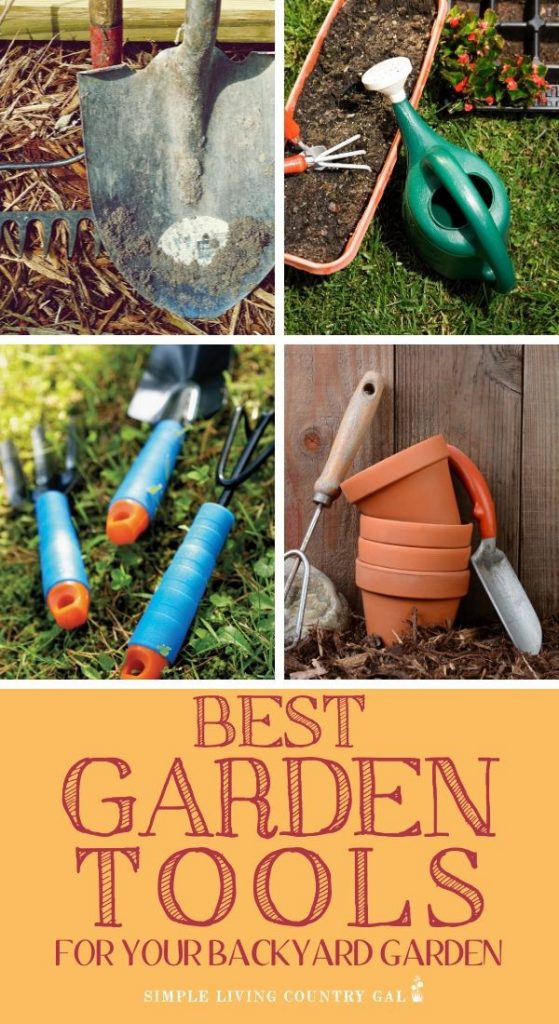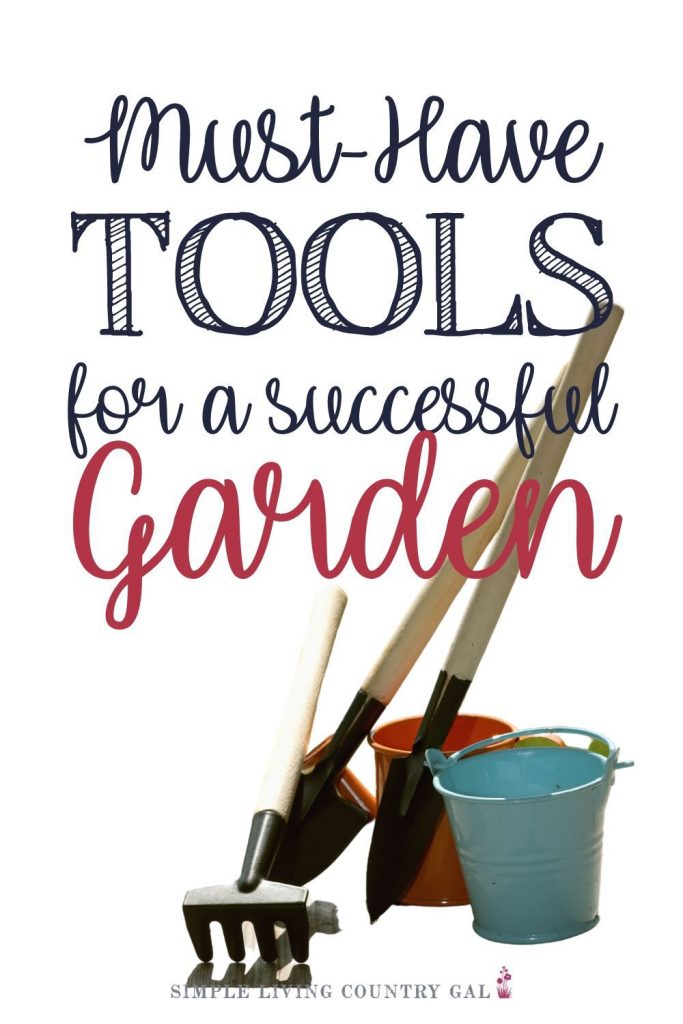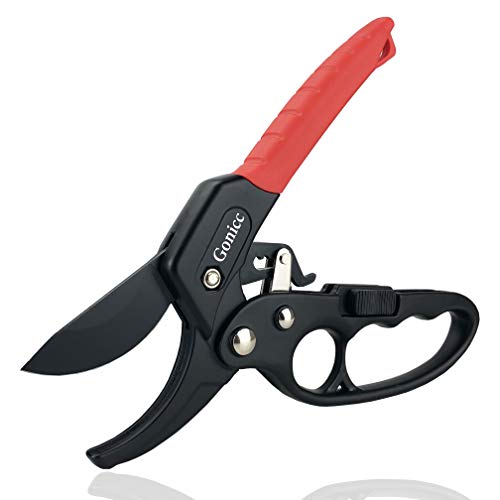Best Gardening Tools
Having the best gardening tools in your garden shed can be incredibly beneficial when planting and growing produce in your own backyard. Stock your garden tool supply before you begin planting and help make the start-up process easier on your time and back.
Having tools will help you on how to start a backyard garden that will be full of huge organic veggies you can enjoy all year long.
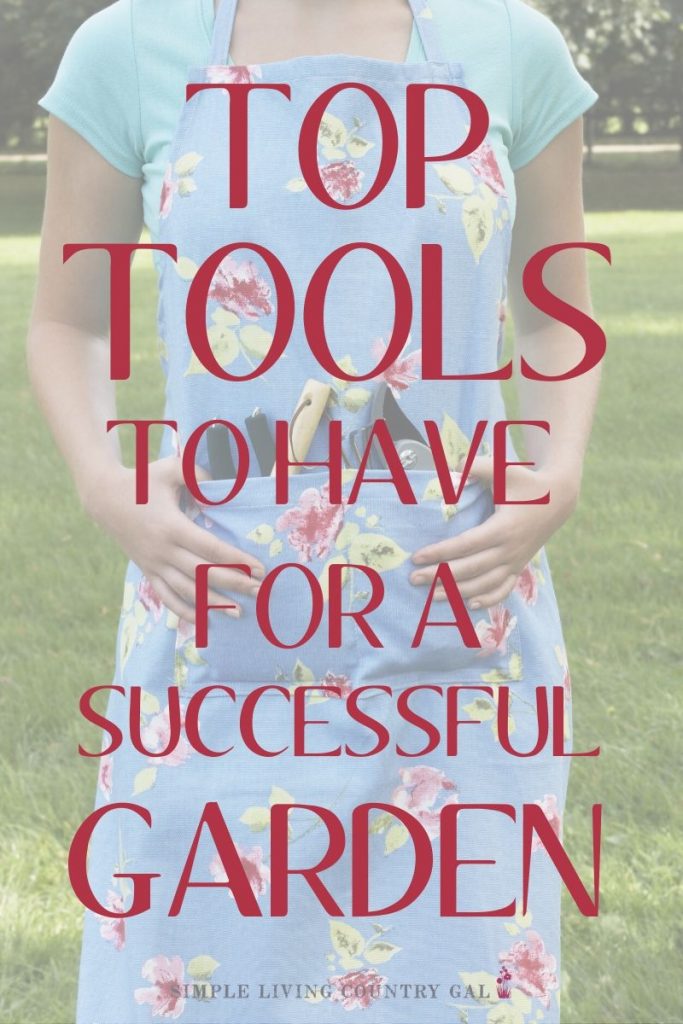
A backyard garden is a great way to feed your family healthy fruits and vegetables, but it has other benefits as well.
- It’s a fun and relaxing hobby.
- It provides exercise.
- It gives you a reason to go outside and get some fresh air and sunshine.
- It is a great teaching tool for your children or grandchildren.
To help your garden be a joy instead of a chore you avoid, having the best tools to make the hard jobs easier will help.
When is the best time to buy yard tools?
If you want to make the most of your money, know the best time to buy yard tools will help. I love to find deals at yard sales throughout the summer. You can usually find rakes and other hand tools for just a few dollars. This is a fraction of what you will pay new at a store.
Later summer is another good time as many stores are trying to get rid of their stock, however what they have on sale my not be the tool you are looking for.
Finally, spring is another good time to buy tools because you can find some great deals as stores try to drum up excitement.
Be sure to grab your FREE Gardening Tools checklist below!
Do you need a full garden to grow produce for a family?
If you live in the suburbs, have physical limitations, or are short on time, a large vegetable garden may not be the best option. The good news is you can grow plenty of amazing and organic food in other ways.
- Sore back? Use a garden table to bring the soil up closer to you.
- Short on time? You can grow an herb garden that needs less attention than a traditional garden. Herbs grow well in containers or you can grow herbs in straw bales.
- Short on space? You can grow a veggie garden using grow bags and tuck them into your flower beds.
- Not a veggie fan? You can grow a flower garden to attract pollinators.
Regardless of what kind of garden you plan to grow, you’ll need tools to get started. Before purchasing your tools, though, you will want to make some decisions about your garden so that you get the right equipment without spending more money than you need.
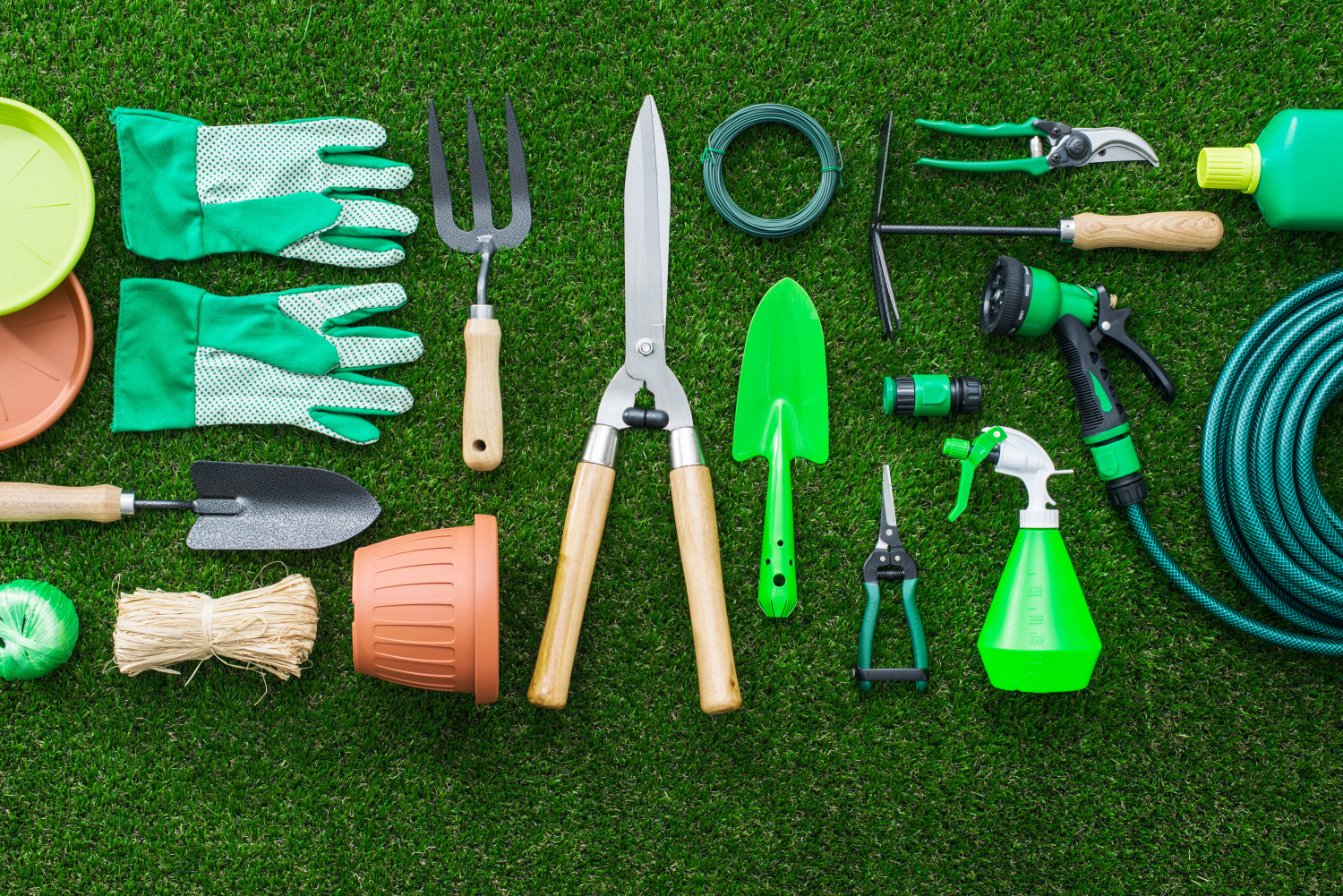
Questions to ask before purchasing garden tools.
Know what you need before you shop so you are not purchasing things you may never use. Gardening tools are meant to make a job easier to do, so try not to get pulled into a new fad until you have explored all the options.
- Will you need to start a garden from scratch? If so, you will need bigger equipment such as a rototiller and pick axe.
- Do you have physical issues? If so, you may want to invest in a gardening table or a garden chair, or a kneeler.
- Do you want things close to your home? Then you may want to consider purchasing containers to grow your vegetables in on your back patio.
- If you plan to plant in the ground, how is your soil? If it’s unhealthy, you will need a test kit and a supply of compost to amend it for better growing. If it is full of rocks, you may need a wheelbarrow to haul them out.
- Will you instead use raised plant beds? These can be purchased, or if you’re handy with a hammer and a saw, you can make them yourself.
New Garden Guides to Read:
- HOW TO START A GARDEN – PREPPING YOUR SOIL
- Garden Planning for Beginners
- Patio Gardening for Beginners
- First Time Gardener Vegetables
Now that you’ve made some decisions about your garden, let’s take a look at the tools you’ll want to consider investing in for successful planting and growing.
Best Gardening Tools
Before shopping, read over this list. Gardening can be expensive, but it doesn’t have to be! Make a list of needs and another list of wants. Work to purchase your needs first so you know you have the basic tools covered. Next, look for deals wherever you can. You can visit a few yard sales to see if there are any tools you can purchase at a discount or ask family if they have any extra items they no longer need.
Garden Gloves
Regardless of what kind of garden you’re planting, digging in the dirt and maintaining your plants is hard work and can take a toll on your hands. Even more importantly, you may find rocks, sticks, or unwanted creatures in your soil, and gloves will help prevent injury and blistering.
- Breathable Rubber Coated Yard Garden Gloves I love these gloves because they fit well and are easy to move your fingers in.
- Long Sleeve Garden Gloves These are a great option that will not only protect your hands but your arms as well.
- Thorn Proof No Stab Garden Gloves Working with thorns can be painful, but with these protective gloves, you can work without fear.
COOLJOB Gardening Gloves Best Gift for Women Ladies, 6 Pairs Breathable Rubber Coated Yard Garden Gloves, Outdoor Protective Work Gloves with Grip, Medium Size Fits Most, Red & Green

You will do better to choose gloves with reinforced fingertips to prevent punctures. And select a pair that’s waterproof to keep your hands dry while watering. For bigger gardening projects, you may want padded gloves to help prevent blisters and adjustable wrist straps so the soil doesn’t get in.
SLCG PRO TIP: Be sure to try gloves on before purchasing; the wrong fit can be just as bad as not wearing any. Be sure to look at the fit, feel, and comfort before you invest in a pair of gardening gloves.
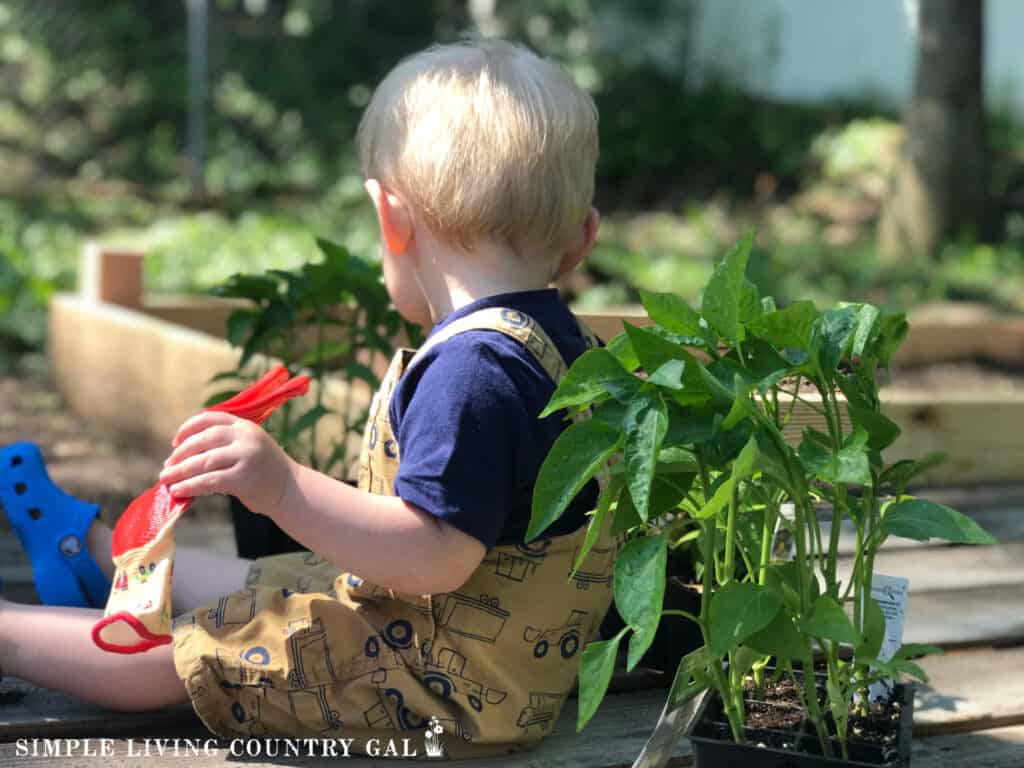
Garden Kneeling Pad
Kneeling and sitting on the ground for long periods of time can quickly take a toll on your knees. A kneeling pad provides cushioning to help keep your knees from getting sore. Most garden centers, and even discount stores, sell these rectangular foam pads but in a pinch, you can make your own.
- Basic Kneeling Pad This is a good place to start with a kneeling pad. It is very light weight and easy to carry around.
- Cute Bee Kneeling Pad Who says a kneeling pad needs to be boring? This cute bee pad is perfect if you want a fun way to protect your knees.
- Garden Stool and Kneeler I you are not sure whether you want a pad or a stool, this option gives you both.
Thick Kneeling Pad, Garden Kneeler for Gardening, Bath Kneeler for Baby Bath, Kneeling Mat for Exercise & Yoga, Knee Pad for Work, Floor Foam Pad, Extra Large (XL) 18 x 11 x 1.5 Inches, Black

SLCG Pro Tip: For a DIY option, you can use an old chair cushion or a leftover piece of foam that you wrap in duct tape as this will keep the foam from tearing.
Garden Trowel
If you’re unfamiliar with this tool, a trowel is a small, handheld shovel. It’s handy for both a small container garden on your back patio all the way up to a bigger garden in your yard. You can use a gardening trowel to dig small holes or fill containers with potting soil. It’s also useful for transplanting seedlings and digging up weeds.
- Digging Trowel Transplanter This option has a serrated edge that helps it go into solid, hard ground more easily.
- Super Strong Garden Trowel If you need something durable, this heavy-duty trowel is a good fit.
- Steel Trowel With Rubberized handle I like this option because it has a no-slip handle, allowing you to work even if your hands are sweating.
Garden Serrated Planting Trowel, Multifunctional Shovel with ash Wood and Stainless Steel Digging Trowel Transplanter

While there are inexpensive plastic trowels available, this is one tool you should splurge on. Since you will using it quite often you will want it to last. Choose one with a solid metal blade and a sturdy wooden handle that fits comfortably in your hand.
Pruning Shears
Another great gardening tool to have is a good set of pruning shears. These shears will help you keep your plants under control when some of them start taking over. They’re also handy for snipping dead leaves or vines all the way to small branches.
For the gardener, there are two basic types of pruning shears.
- Anvil pruners: This option uses a sharp blade against a flat surface, like a knife against a board.
- Bypass pruners This option has a sharp blade passing over a flat surface with a sharp edge, like scissors.
gonicc 8

Bypass shears are best for live plants and green wood while Anvil shears are better for dead branches because they will cause crush injuries to fresh stems.
Again, look for ones that fit comfortably in your hand. To keep them working at their best, they should be sharpened regularly.
SLCG PRO TIP: Do you love the smell of fresh-cut flowers decorating your kitchen table? Then having a sturdy set of pruning shears is a great tool to have in your gardening toolbox. Use them to snip off a few flowers to help create a beautiful bouquet and bring some of those amazing flowers inside of your home.
Loppers
Garden Loppers are long-handled pruning shears, and they’re used to trim branches that are harder to reach or very thick. Handles can be anywhere from 16 to 36 inches, and this tool can be heavy, making it a little difficult to use.
Depending on the type of garden you plan to grow, you may not need a pair of loppers, but knowing they are out there as another gardening tool option is useful to know as your gardening knowledge grows.
SLCG PRO TIP: If you have wrist issues or Carpel Tunnel in your hands, garden loppers can make pruning less pailful and even easier. By using both hands to trip branches and stems, you remove some of the actions that can be painful if you suffer from these conditions.
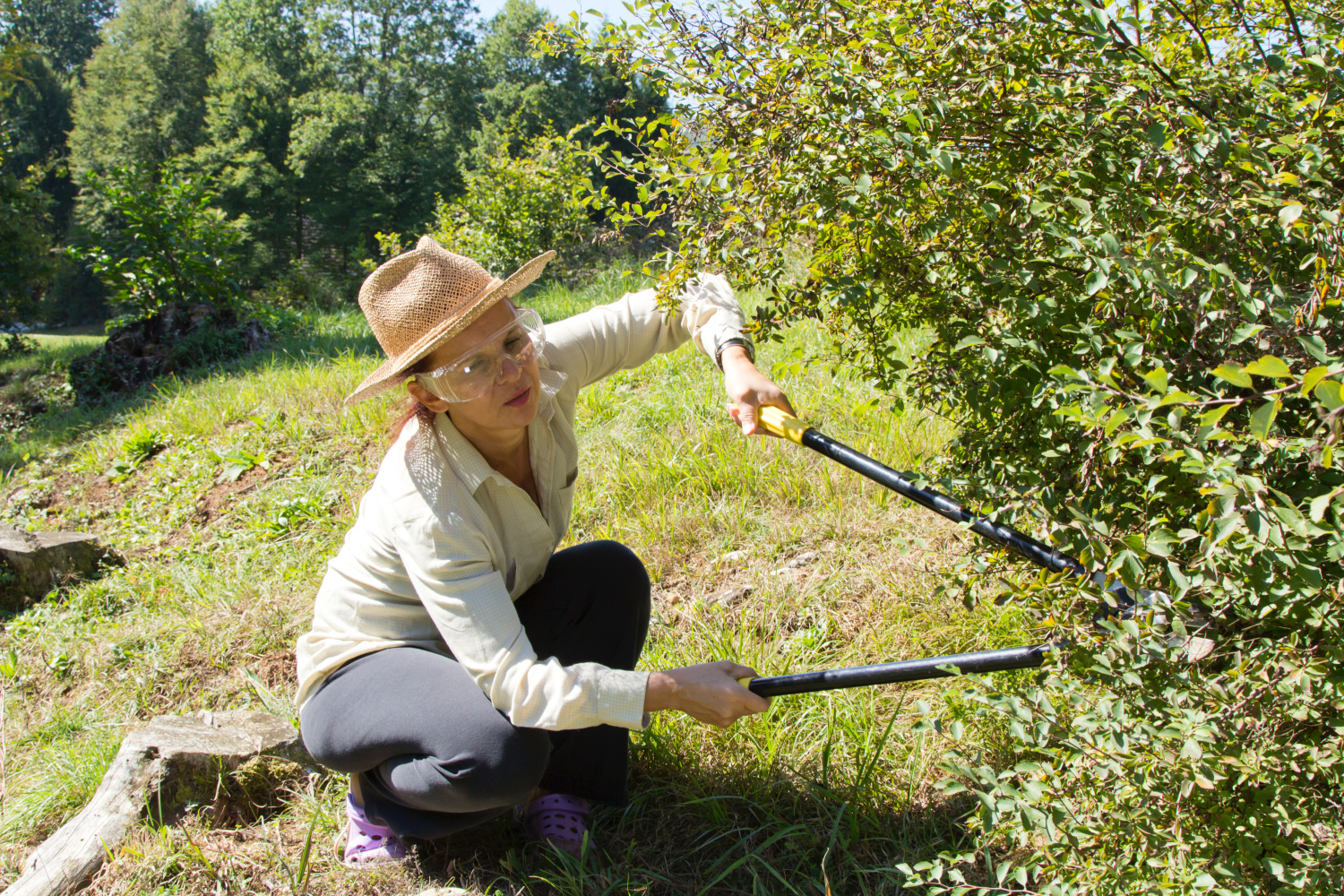
Hose/Sprinkler/Watering Can
Your new garden will need a lot of water to support the growth of roots and help it flourish. Rain alone will not be enough to get the job done. Choose your watering option based on the type of garden you’re planting.
A watering can is great for a small container garden, but will not be enough for a backyard vegetable garden. For a garden planted in the ground, you’ll need a hose or a sprinkler attached to a hose to get the job done. If you’re choosing just a hose, use a sprayer attachment to control the water pressure and flow.
- Watering Can A classic metal option good for a patio garden.
- Watering Hose and Nozzle For a larger garden, this hose and nozzle will help make your daily job easier to do.
- Sprinkler Put watering on autopilot with a water sprinkler. It is up off the ground so it can cover more area.
- Drip Irrigation Another option is this irrigation setup. It allows you to water on a schedule.
GREEN MOUNT Watering Wand, 24 Inches Sprayer Wand with Superior Stainless Head, Perfect for Hanging Baskets, Plants, Flowers, Shrubs, Garden and Lawn




When watering your garden, in most cases, early mornings are best. Midday watering will evaporate too quickly, and the plants won’t get the nourishment they need. And evening watering will waterlog the soil, creating bacteria and fungi.
Soil Tools
A long-handled garden rake is one of those tools I like to call essential. With a rake, you will be better able to create smooth and level soil and remove any unwanted weeds. A garden rake will also help you keep your garden bed clean of leaves, twigs, and other debris so your plants can grow healthy and strong.
When picking a garden rake, be sure to choose a hefty one with a strong wooden handle and a metal rake head.
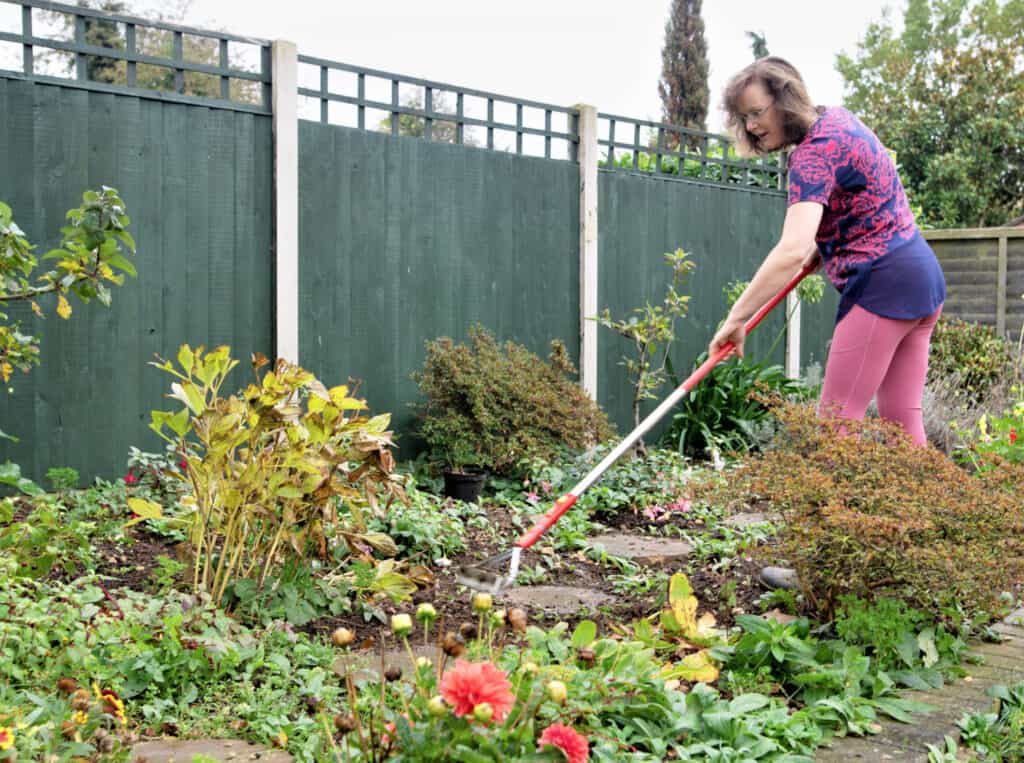
For a container garden, you will want a short-handled rake, about the size of a trowel, to keep the soil in your pots clean. You can also use gloves that are meant for raking. These are a much easier way to keep containers and small garden beds clean and free of weeds.
For tough, overgrown land, swap out a rake for a garden hoe to help chop and clear roots and tough soil. A garden hoe is a wonderful tool that can save your back when cleaning out a new area for your garden. The end of the hoe can slice and chop up roots and weeds, making them much easier to remove.
15


Angled Shovel
If you’re new to gardening, all shovels may seem the same, but they’re not. There are a variety of options for a variety of tasks. For gardening, an angled shovel (one with a triangular head) is the best for digging holes to plant. You can use it when planting seeds, digging holes, moving soil, and even relocating plants to maintain the root system.
If you’re planting a bed, you may want to consider a squared-off spade for cleaner cuts, but it’s unnecessary when you’re just starting out.
Spear & Jackson 1184NB Neverbend Carbon Steel Treaded Border Spade, 93.5 x 14 x 9 cm, Gray


Wheelbarrow
A wheelbarrow is a good tool to have for bigger projects such as moving compost or rocks around your garden area.
When purchasing a wheelbarrow, consider what you’ll be using it for and if you want it to last a long time. A plastic one is less expensive and much lighter in weight, but a metal one will be more durable over time.
Gorilla Carts 600 Pound Capacity Heavy Duty Poly Yard Garden Steel Quick Dump Utility Wheelbarrow Wagon Trolley Cart with Straight Pull Handle, Green

SLCG PRO TIP: If you suffer from back issues, then a garden wagon or a utility cart may be more suitable for you. These wagons are quickly gaining in popularity because of their dual purpose. Use it to hold plants and tools, or you can use it to hold gardening debris as you work.
Hand-Held Weeder
You should only need this tool if you plant a large garden. It’s true you can easily manage the weeds in a container garden with a small rake or trowel. In containers, the root systems of weeds are not as deep and, therefore, much easier to pull by hand. In a large outside garden, the roots are more involved, making these weeds much more difficult to pull, so a hand-held weeder does come in handy.
The trick to keeping those pesky weeds from returning is to be sure you are removing the entire root of the weed; this can be tricky to do and is one reason why a hand-held weeder is on my “Best Gardening Tools” list. The metal tooth allows you to get down below the root, which you can then angle up, taking the entire plant with it. Very handy if you find many weeds in your garden.
- No Bend Hand Weeder This tool is a good basic option to have on hand.
- Weed Puller Tool with Long Handle Standing up can be much easier on your back and the reason why I love this option.
- V-Blad Weeder This is a different type of weeder that works great.
Betus Manual Hand Weeder – Bend-Proof Leverage Base for Super Easy Weed Removal & Deeper Digging – Sturdy Chrome Plated Steel – Compact Garden Weed Puller Tool for Yard Lawn and Farm

SLCG PRO TIP: Hand weeding is a great way to ensure your garden remains organic and chemical-free. If you want to deter weeds from happening in the first place, consider using mulch around the base of your plants.
READ MORE ABOUT NATURAL MULCHING
Plant Dividing Tools
Dividing tools are a great tool to have, especially for flower beds. A perennial divider allows you to easily divide larger plants into smaller ones without causing any damage to the plant and root system so that you can divide, move, and replant. It can also help with edging a flower bed.
A big grip knife helps with weeding, seed planting, dividing smaller plants, and digging holes in a plant bed. These specialized tools help to easily keep up with your flower garden while keeping the plants healthy.
Garden Fork
Garden forks great to have because they can dig into dense soil much better than a shovel, and they’re great for turning the dirt over, giving life to stagnant soil. A pitchfork has a slight curve to the spines for scooping up mulch and turning compost piles. A fork with strait tines will do a better job of digging in rocky or clay soil or soil that is compacted. And square tines are stronger than flat ones, making it easier to manage rocks or roots.
Consider where and how you’ll be using it to/ select the best fork for your needs. Look for one that has a non-slip grip and is stainless steel to help prevent rusting.
- Hand Held Garden Fork This will help you to move plantings without upsetting the root systems.
- No Slip Hand Fork This option has a handle that is kinder to your grip.
- Pitchfork A pitchfork is great at moving piles of weeds, mulch, straw, or grass.
Berry&Bird Gardening Hand Fork, Stainless Steel Hand Weed Fork, Traditional Garden Hand Fork Tool with Ergonomic Ash Wood Handle for Weeding, Digging, Planting and Cultivating

Garden Hoe
A garden hoe is another tool you won’t need for a container garden but one that will come in handy for a vegetable or flower garden. The garden you plan to grow will depend on the type of hoe you want to buy.
For a vegetable garden, you’ll want one that’s sturdy and has a wide base. A wide base garden hoe will help you dig or cut thick roots and make easy work of turning the soil in preparation for planting.
For a flower bed, a thinner garden hoe is a better option to protect your delicate plants. It will also help with weeding and preparing your flower bed.
When choosing a hoe, look for one with a long reach and a comfortable handle; you want to be able to use it while standing to protect your back. Find one with a good sharp blade to get the job done right, and keep the blade sharpened over time to keep it working well.
Flat hoes are good for turning the soil in vegetable gardens, while a weeding hoe is better for cutting down growth.
Rototiller
This is a big tool that, if used often, can be worth investing in owning one. There are many different types of tillers, but if you plan on using this yourself, I recommend a lightweight option such as the Mantis. I purchased ours at a yard sale for just $40 over 10 years ago, and it is still going strong.
YIYIBYUS Garden Tiller/Cultivator 52CC 2-Stroke Gas Powered Hand Rotary Cultivator Rototiller Garden Tool Cordless with Long Handle


What is a rototiller?
A rototiller is a gardening machine that uses running blades to break up soil or ground. It is mainly used to start a new garden bed as it works great to loosen up compact soil without much effort. Rototillers, also called tillers, can be electric or gas and come in all sizes and weights.
If you only need to use a tiller once or twice a year, you can rent them at many gardening centers. Most charge by the hour or by the day, but renting can save you quite a bit of money, so you may want to consider if you are on a budget.
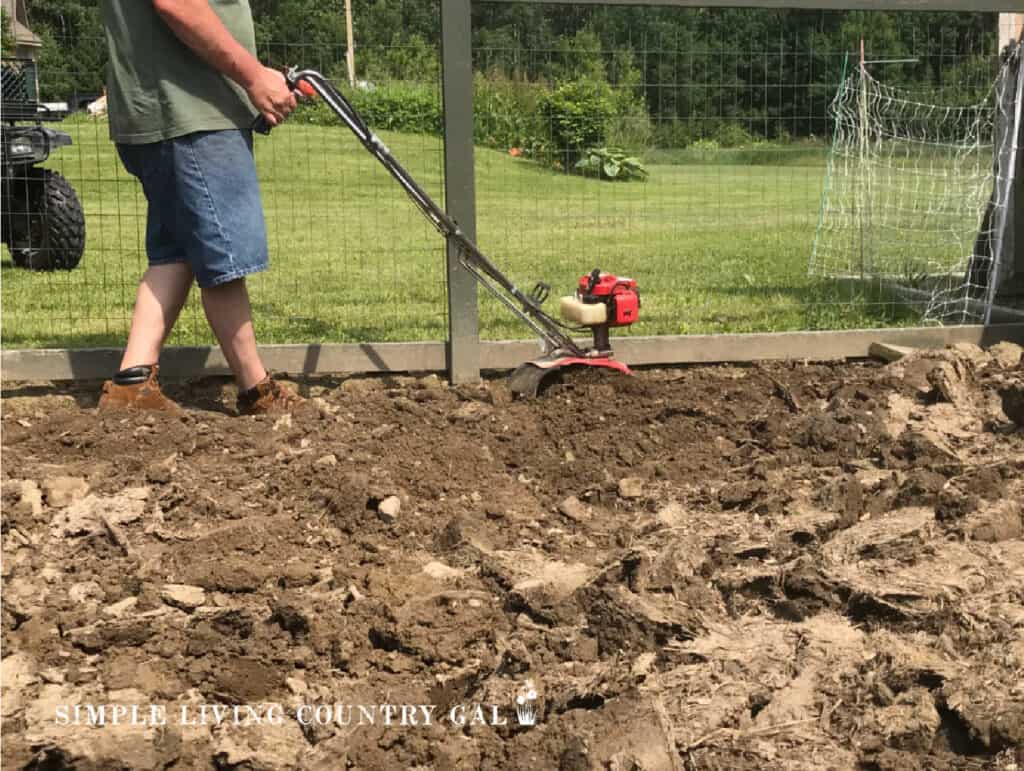
Other Gardening Needs
In addition to having the right tools for your garden, you’ll want to ensure you’re giving it what it needs to grow.
Choose fruits, vegetables, or flowers that grow with the same amount of light and water in the same soil type. Planting vegetables that grow better in shade next to those that need a lot of light means some plants will not grow healthy and strong.
Starter Vegetable Gardens, 2nd Edition: 24 No-Fail Plans for Small Organic Gardens


If you want to plant seeds that have different light or watering needs, plant them far enough away from each other so that they can each get what they need without disrupting each other.
Soil is also a big consideration for your garden as it provides the necessary nutrients for optimal growth. Some plants will grow well in drier soil, while others need nutrient-rich soil. Be sure to read the planting information on all the plants or seeds you plan to grow. If the soil in your yard is incompatible, you may need to consider raised beds so that you can easily lay the proper type of soil.
Other Garden Soil Resources:
One last consideration for planting is the time of year. All fruit, vegetable, and flower seeds will recommend the best time of year for planting to ensure growth. Planting too early may mean your plants can be killed by a late frost. Don’t let that happen.
Before buying your tools or making your first dig in the ground, take the time to plan your garden. Consider what you will grow, where you will grow it, what type of soil and light it needs, and how much water it requires.
You may even want to use a landscape or gardening app to help you plan your garden before digging. The better you plan your garden in advance, the more chance it has to grow successfully and provide a bountiful harvest.
A garden is a great way to provide healthy fruits and vegetables for your family to enjoy or create an environment for bees and butterflies to thrive. Having the best gardening tools and a little advance planning will help you get the most out of it.
MORE GARDENING RESOURCES:
